McConnell Campbell R., Brue Stanley L., Barbiero Thomas P. Microeconomics. Ninth Edition
Подождите немного. Документ загружается.


thus to business losses. A prosperous firm may experience such losses through
no fault of its own.
2. Changes in the structure of the economy Consumer tastes, technology, resource
availability, and prices change constantly in the real world, bringing changes in
production costs and revenues. For example, an airline earning economic profit
one year may find its profit plunging the next year as the result of a significant
increase in the price of jet fuel.
3. Changes in government policy A newly instituted regulation, the removal of a
tariff, or a change in a national policy may significantly alter the cost and revenue
data of the affected industry and firms.
Regardless of how such revenue and cost changes come about, they are risks that
the firm and entrepreneur must take to stay in business. Some or all the economic profit
in a real, dynamic economy may be compensation for taking risks.
INNOVATIONS AND PROFIT
Such uncertainties are beyond the control of the individual firm or industry and
thus external to it. One dynamic feature of capitalism, however—innovation—
occurs at the initiative of the entrepreneur. Business firms deliberately introduce
new methods of production to affect their costs favourably and new products to
affect their revenues also favourably. The entrepreneur purposely undertakes to
upset existing cost and revenue data in a way that promises to be profitable.
Again, uncertainty enters the picture. Despite exhaustive market surveys, new
products or modifications of existing products may be economic failures. Similarly,
of the many new novels, textbooks, movies, and music CDs that appear every year,
only a handful garner large profits. Nor is it known with certainty whether new pro-
duction machinery will actually yield projected cost economies. Thus, innovations
undertaken by entrepreneurs entail uncertainty and the possibility of losses, not just
the potential for increased profit. Some of the economic profit in an innovative economy
may be compensation for dealing with the uncertainty of innovation.
MONOPOLY AND PROFIT
So far, we have linked economic profit with the uncertainties surrounding (1) the
dynamic environment to which enterprises are exposed, and (2) the dynamic busi-
ness processes they initiate themselves. The existence of monopoly power is a final source
of economic profit. Because a monopolist can restrict output and deter entry, it may
persistently enjoy above-competitive prices and economic profit if demand is strong
relative to cost.
Economic uncertainty and monopoly are closely intertwined as sources of eco-
nomic profit. A firm with some monopoly power can reduce business risk, or at least
manipulate it enough to reduce its adverse effects, and thus increase and prolong
economic profit. Furthermore, a firm can use innovation as a source of monopoly
power and a means of sustaining itself and its economic profit.
An important distinction between profit stemming from uncertainty and profit
stemming from monopoly has to do with the social desirability of these two sources
of profit. Bearing business risk and undertaking innovation in an uncertain eco-
nomic environment are socially desirable functions. Obtaining monopoly profit is
not so socially desirable, since it is typically founded on reduced output, above-
competitive prices, and economic inefficiency. (Key Question 8)
chapter sixteen • rent, interest, and profit 431
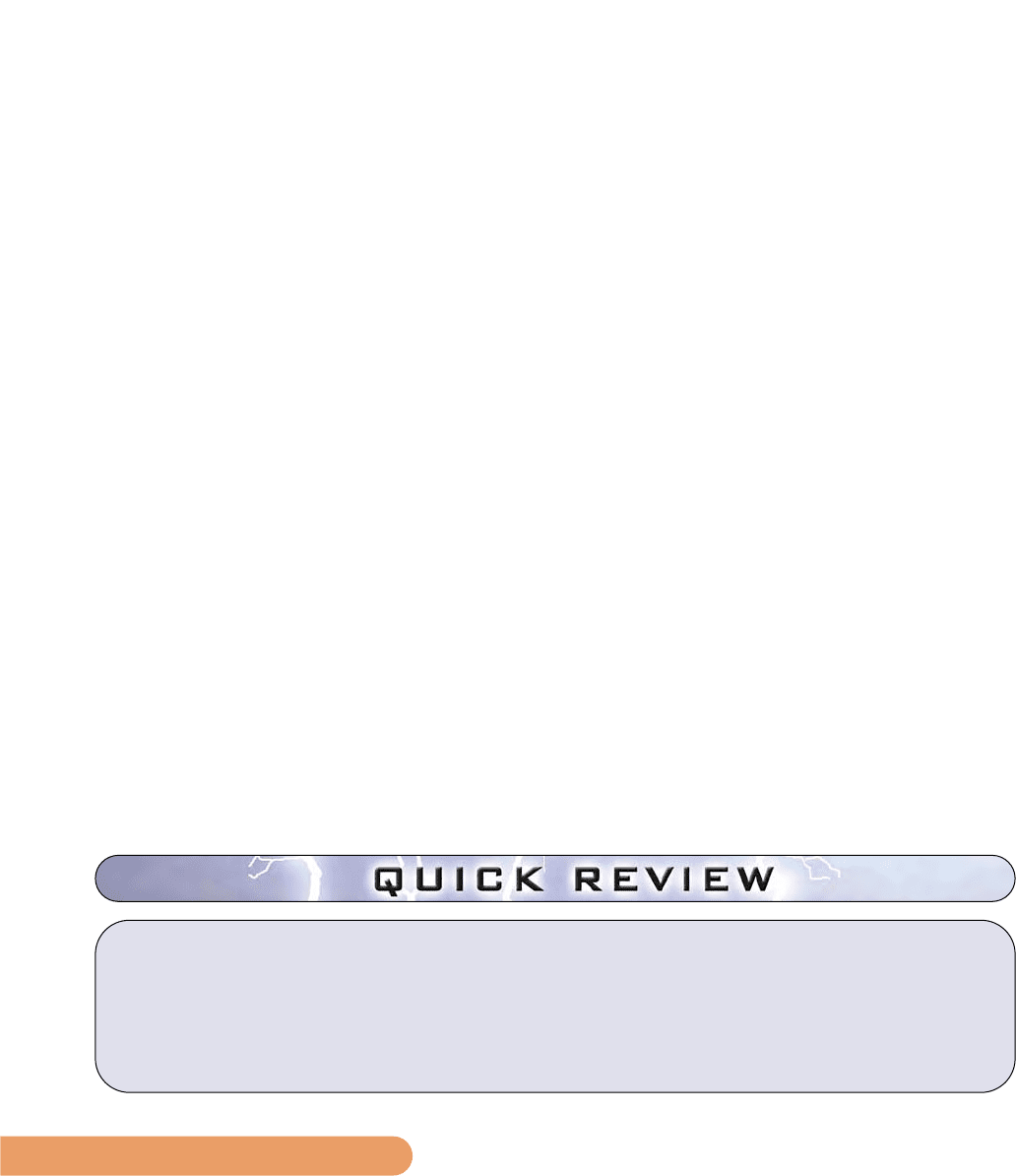
Functions of Profit
Economic profit is the main energizer of the capitalistic economy. It influences both
the level of economic output and the allocation of resources among alternative uses.
PROFIT AND TOTAL OUTPUT
The expectation of economic profit motivates firms to innovate. Innovation stimu-
lates new investment, thereby increasing total output and employment. Thus, the
pursuit of profit enhances economic growth by promoting innovation.
PROFIT AND RESOURCE ALLOCATION
Profit also helps to allocate resources among alternative lines of production. Entre-
preneurs seek profit and shun losses. The occurrence of economic profit in a indus-
try is a signal that society wants that particular industry to expand. It attracts
resources from industries that are not profitable. But the rewards of profit are more
than an inducement for an industry to expand; they also attract the financing that
firms need for expansion. In contrast, losses penalize businesses that fail to adjust
their productive efforts to the goods and services most preferred by customers.
Losses signal society’s desire for the afflicted industries to contract.
So, in terms of our chapter-opening question, Nortel Networks experienced large
revenue and profit increases because it is selling Internet switching devices and
optical equipment that society greatly wants. The profit increase signals that soci-
ety wants more of its scarce resources allocated to that use. Corel Corporation, in
contrast, was not providing service equivalent in value to the costs of the resources
used to provide it—the company therefore suffered a loss. The loss signals that soci-
ety would benefit from a reallocation of some of those resources to some other use.
Profits and losses do not, however, result in an allocation of resources that is per-
fectly attuned to consumer preferences. The presence of monopoly, for example,
impedes the movement of firms and resources from industry to industry in response
to economic profit.
Our discussion in this and in the preceding chapter would not be complete without
a brief re-examination of how Canadian national income is distributed among
wages, rent, interest, and profit.
Let’s look at Table 16-2. Although the income categories shown in that chart do
not neatly fit the economic definitions of wages, rent, interest, and profits, they do
432 Part Three • Microeconomics of Resource Markets
● Pure or economic profit is what remains after all
explicit and implicit costs (including a normal
profit) are subtracted from a firm’s total revenue.
● Economic profit has three sources: the bearing
of uninsurable risk, the uncertainty of innova-
tion, and monopoly power.
● Profit and profit expectations affect the levels of
investment, total spending, and domestic out-
put; profit and loss also allocate resources
among alternative uses.
Income Shares
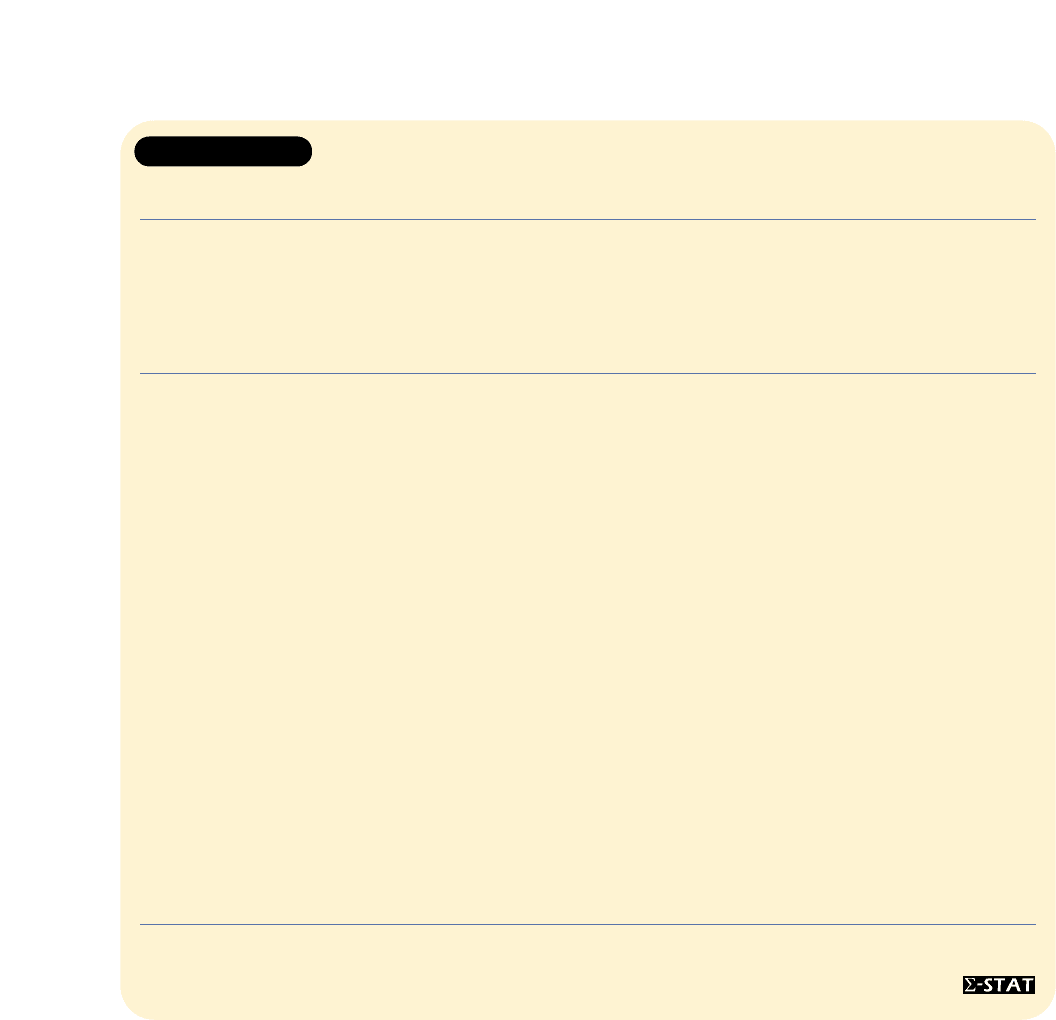
provide insight about income shares in Canada. Note the dominant role of labour
resource and thus labour income in the Canadian economy. Even with labour
income defined narrowly as “wages and salaries,” labour receives about 70 percent
of national income. But some economists contend that the income of proprietors is
largely composed of implicit wages and salaries and should be added to the “wages
and salaries” category to determine labour income. When we use this broad defini-
tion, labour’s share rises to nearly 80 percent of national income, a percentage that
has been remarkably stable in Canada since 1926. That leaves about 20 percent for
capitalists in the form of rent, interest, and profit. Ironically, capitalist income is a
relatively small share of the Canadian economy, which we call a capitalist system.
TABLE 16-2 RELATIVE SHARES OF DOMESTIC INCOME,
1926–2000 (SELECTED YEARS OR PERIOD
AVERAGES OF SHARES FOR INDIVIDUAL YEARS)
Year or Wages, Corporation Interest Accrued net Net income Inventory Net domestic
period salaries, profits and mis- income of of nonfarm valuation income at
and supple- before cellaneous farmers unincor- adjustment factor cost
mentary taxes investment from farm porated
labour income production business
income including
rent
1926 55.3% 11.4% 3.2% 14.1% 14.9% 1.1% 100%
1929 60.0 12.9 3.7 8.0 15.7 –0.3 100
1937 62.6 15.6 3.1 6.9 13.9 –2.1 100
1941 61.9 18.1 2.8 7.0 12.6 –2.4 100
1945 63.4 13.1 2.7 9.2 12.0 –0.4 100
1951 60.7 17.9 2.5 10.5 12.0 –3.6 100
1957–60 67.0 13.7 3.9 3.6 12.0 –0.2 100
1961–65 67.7 14.2 4.3 3.6 10.6 –0.3 100
1966–70 70.9 13.5 4.7 2.7 8.8 –0.6 100
1971 73.0 12.2 5.5 2.0 8.2 –0.9 100
1973 70.6 16.0 5.7 3.0 7.2 –2.5 100
1975 71.2 14.8 7.1 2.9 6.0 –2.0 100
1979 69.3 16.4 10.7 1.7 5.4 –3.5 100
1982 72.7 9.2 12.2 1.2 5.8 –1.1 100
1990 72.6 8.7 11.1 0.6 7.0 –0.0 100
1994 73.5 10.0 10.1 0.4 6.9 –0.9 100
1999 75.2 10.5 5.0 0.2 6.2 2.9 100
2000 69.6 15.9 6.6 0.3 7.9 –0.3 100
Source: 1926–1982: Statistics Canada, National Income and Expenditure Accounts, Annual estimates 1926–1986, Table 70; for other
years Statistics Canada, National Income and Expenditure Accounts. For updates, visit Statistics Canada at <www.statcan.ca/
english/Pgdb/Economy/ Economic/econ03.htm>
Visit www.mcgrawhill.ca/college/mcconnell9 for data update.
chapter sixteen • rent, interest, and profit 433
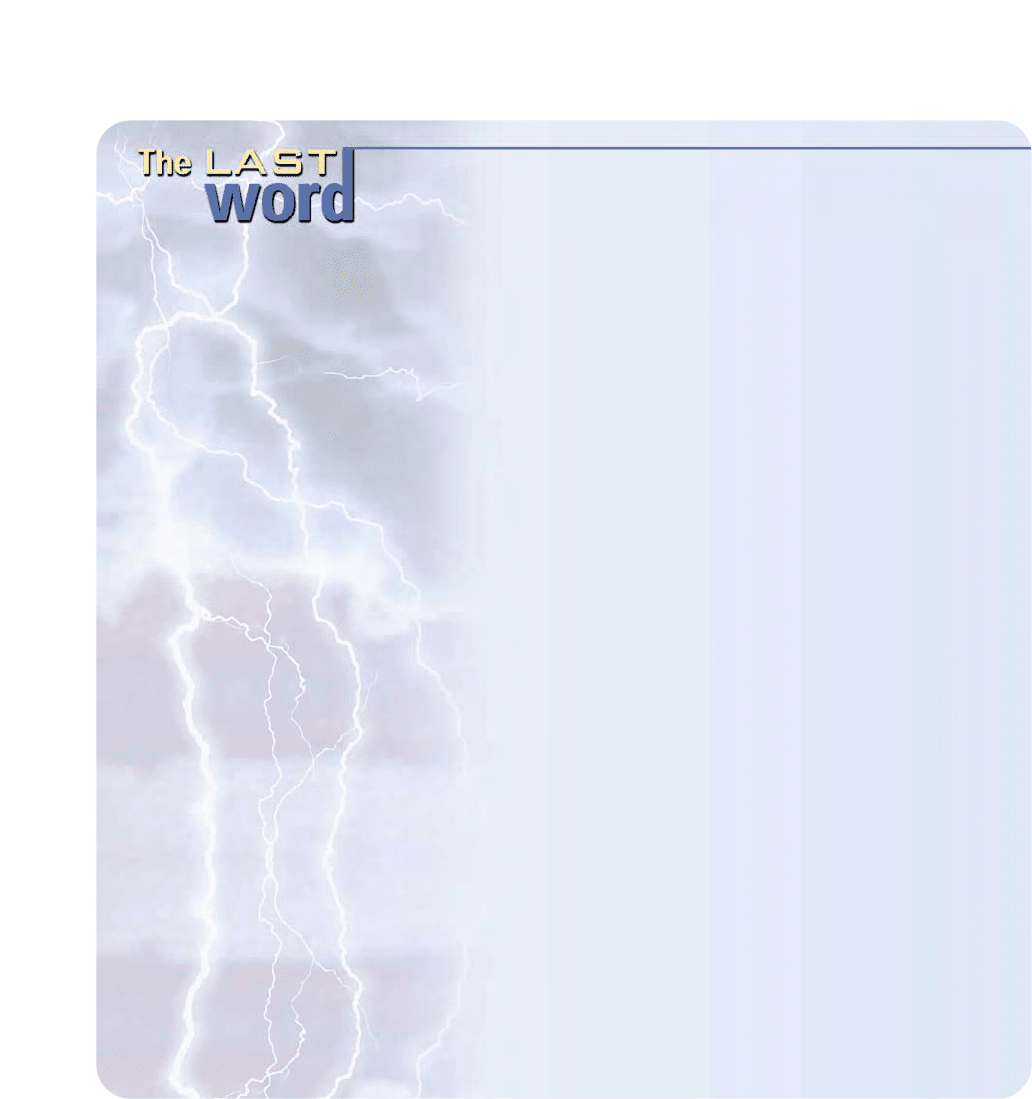
434 Part Three • Microeconomics of Resource Markets
Borrowing and lending—receiv-
ing and granting credit—are a
way of life. Individuals receive
credit when they negotiate a
mortgage loan and when they
use their credit cards. Individu-
als make loans when they open
a savings account in a chartered
bank or buy a bond.
It is sometimes difficult to de-
termine exactly how much inter-
est we pay and receive when we
borrow and lend. Let’s suppose
that you borrow $10,000, which
you agree to repay with $1000 of
interest at the end of one year. In
this instance, the interest rate is
10 percent per year. To deter-
mine the interest rate i, we com-
pare the interest paid with the
amount borrowed:
i = = 10%
But in some cases a lender—say,
a bank—will discount the inter-
est payment at the time the loan
is made. Thus, instead of giving
the borrower $10,000, the bank
discounts the $1000 interest pay-
ment in advance, giving the bor-
rower only $9000. This increases
the interest rate:
i = = 11%
While the absolute amount of
interest paid is the same, in this
second case the borrower has
only $9000 available for the
year.
An even more subtle point is
that, to simplify their calcula-
tions, many financial institutions
assume a 360-day year (twelve
30-day months), which means
the borrower has the use of the
lender’s funds for five days less
than the normal year. This use of
a short year also increases the
actual interest rate paid by the
borrower.
The interest rate paid may
change dramatically if a loan is
repaid in installments. Suppose
a bank lends you $10,000 and
charges interest in the amount
of $1000 to be paid at the end of
the year. But the loan contract
requires that you repay the
$10,000 loan in 12 equal monthly
installments. In effect, then, the
average amount of the loan out-
standing during the year is only
$5000. Therefore:
i = = 20%
Here interest is paid on the total
amount of the loan ($10,000)
rather than on the outstanding
balance (which averages $5000
for the year), making for a much
higher interest rate.
Another factor that influences
the effective interest rate is
whether interest is compounded.
Suppose you deposit $10,000 in
a savings account that pays a
10 percent interest rate com-
pounded seminannually. In other
words, interest is paid on your
loan to the bank twice a year. At
the end of the first six months,
$500 of interest (10 percent of
$10,000 for half a year) is added
to your account. At the end of the
year, interest is calculated on
$10,500 so that the second in-
terest payment is $525 (10 per-
cent of $10,500 for half a year).
Thus:
i = = 10.25%
This means that a bank adver-
tising a 10 percent interest rate
compounded seminannually is
actually paying more interest
to its customers than a competi-
tor paying a simple (noncom-
pounded) interest rate of 10.20
percent.
“Let the borrower (or deposi-
tor) beware” remains a fitting
motto in the world of credit.
$1025
ᎏ
$10,000
$1000
ᎏ
$5000
$1000
ᎏ
$9000
$1000
ᎏ
$10,000
DETERMINING THE PRICE OF CREDIT
A variety of lending practices may cause the effective
interest rate to be quite different from what it appears to be.

chapter summary
chapter sixteen • rent, interest, and profit 435
1. Economic rent is the price paid for the use of
land and other natural resources whose total
supplies are fixed.
2. Rent is a surplus payment that is socially
unnecessary since land would be available
to the economy even without rental pay-
ments. The idea of land rent as a surplus
payment gave rise to the single-tax move-
ment of the late nineteenth century.
3. Differences in land rent result from differ-
ences in the fertility and climatic features of
the land and difference in location.
4. Although land rent is a surplus payment
rather than a cost to the economy as a
whole, to individual firms and industries,
rental payments are correctly regarded as
costs. These payments must be made to
gain the use of land, which has alterna-
tive uses.
5. Interest is the price paid for the use of
money. In the loanable funds theory, the
equilibrium interest rate is determined by
the demand for and supply of loanable
funds. Other things equal, an increase in the
supply of loanable funds reduces the equi-
librium interest rate, whereas a decrease in
supply increases it; increases in the demand
for loanable funds raise the equilibrium
interest rate, whereas decreases in demand
reduce it.
6. Interest rates vary in size because loans dif-
fer as to risk, maturity, amount, and taxabil-
ity; market imperfections cause additional
variations. The pure rate of interest is the
interest rate on long-term, virtually riskless,
Government of Canada long-term bonds.
7. The equilibrium interest rate influences the
level of investment and helps ration finan-
cial and physical capital to specific firms
and industries. Similarly, this rate influences
the size and composition of R&D spend-
ing. The real interest rate, not the nominal
rate, is critical to investment and R&D
decisions.
8. Although designed to make funds available
to low-income borrowers, usury laws tend to
allocate credit to high-income persons, sub-
sidize high-income borrowers at the expense
of lenders, and lessen the efficiency with
which loanable funds are allocated.
9. Economic, or pure, profit is the difference
between a firm’s total revenue and the sum
of its explicit and implicit costs, the latter
including a normal profit. Profit accrues to
entrepreneurs for assuming the uninsurable
risks associated with organizing and direct-
ing economic resources and for innovating.
Profit also results from monopoly power.
10. Profit expectations influence innovation and
investment activities and, therefore, the
economy’s levels of employment and eco-
nomic growth. The basic function of profits
and losses, however, is to allocate resources
in accord with consumers’ preferences.
11. The largest share of national income—about
70 percent—goes to labour, a share narrowly
defined as “wages and salaries.” When
labour’s share is more broadly defined to
include “proprietors’ income,” it rises to
about 80 percent of national income, leaving
about 20 percent as capital’s share.
terms and concepts
economic rent, p. 418
incentive function of price,
p. 419
single-tax movement, p. 420
loanable funds theory of
interest, p. 422
pure rate of interest, p. 426
nominal interest rate, p. 427
real interest rate, p. 427
usury laws, p. 428
explicit costs, p. 429
implicit costs, p. 429
economic (pure) profit, p. 429
normal profit, p. 430
static economy, p. 430
insurable risks, p. 430
uninsurable risks, p. 430
study questions
1. How does the economist’s use of the term
“rent” differ from everyday usage? Explain:
“Though rent need not be paid by society to
make land available, rental payments are
very useful in guiding land into the most pro-
ductive uses.”
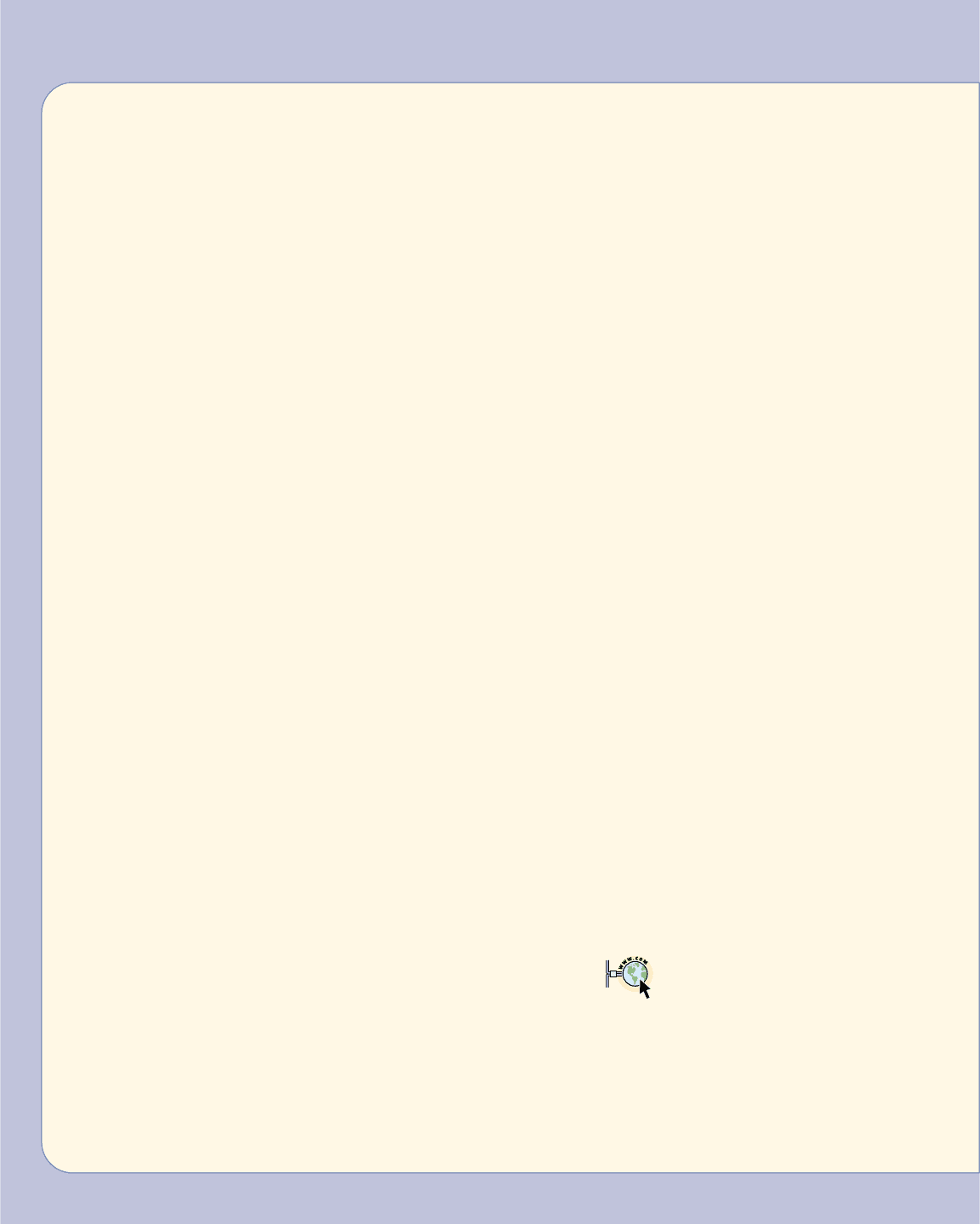
436 Part Three • Microeconomics of Resource Markets
internet application question
1. The real interest rate is the nominal rate less
the rate of inflation. Assume the Consumer
Price Index (CPI) is a proxy for the inflation
rate and one-year Treasury Bill rates repre-
sent the nominal interest rate. Find the current
CPI at <www.statcan.ca/english/econoind/
cpia.htm>, and then subtract it from the cur-
rent one-year Treasury Bill rate <www.bank-
banque-canada.ca/pdf/monmrt.pdf>. Repeat
the process for the one-month Treasury Bills
and the CPI rate of change for the past one
month. Is there a difference between the 1-
month and the 12-month real interest rates?
If so, why is there a difference?
2.
KEY QUESTION Explain why eco-
nomic rent is a surplus payment when viewed
by the economy as a whole but as a cost of
production from the standpoint of individual
firms and industries. Explain: “Rent performs
no ‘incentive function’ in the economy.”
3. If money is not an economic resource, why is
interest paid and received for its use? What
considerations account for the fact that inter-
est rates differ greatly on various types of
loans? Use those considerations to explain
the relative sizes of the interest rates on the
following:
a. A 10-year $1000 government bond
b. A $20 pawnshop loan
c. A 30-year mortgage loan on a $145,000
house
d. A 24-month $12,000 bank loan to finance
the purchase of an automobile
e. A 60-day $100 loan from a personal fi-
nance company
4.
KEY QUESTION Why is the supply
of loanable funds upsloping? Why is the
demand for loanable funds downsloping?
Explain the equilibrium interest rate. List
some factors that might cause it to change.
5. What are the major economic functions of the
interest rate? How might the fact that many
businesses finance their investment activities
internally affect the efficiency with which the
interest rate performs its functions?
6.
KEY QUESTION Distinguish between
nominal and real interest rates. Which is
more relevant in making investment and
R&D decisions? If the nominal interest rate is
12 percent and the inflation rate is 8 percent,
what is the real rate of interest?
7. Historically, usury laws that put below-
equilibrium ceilings on interest rates have
been used in the United States to make
credit available to poor people who could
not otherwise afford to borrow. Critics
contend that poor people are those most
likely to be hurt by such laws. Which view is
correct?
8.
KEY QUESTION How do the concepts
of accounting profit and economic profit dif-
fer? Why is economic profit smaller than
accounting profit? What are the three basic
sources of economic profit? Classify each of
the following according to those sources:
a. A firm’s profit from developing and
patenting a new medication that greatly
reduces cholesterol and thus diminishes
the likelihood of heart disease and stroke
b. A restaurant’s profit that results from con-
struction of a new highway past its door
c. The profit received by a firm due to an
unanticipated change in consumer tastes
9. Why is the distinction between insurable and
uninsurable risks significant for the theory of
profit? Carefully evaluate: “All economic
profit can be traced to either uncertainty or
the desire to avoid it.” What are the major
functions of economic profit?
10. Explain the absence of economic profit in a
purely competitive, static economy. Realiz-
ing that the major function of profit is to allo-
cate resources according to consumer
preferences, describe the allocation of
resources in such an economy.
11. What is the rent, interest, and profit share of
national income if proprietors’ income is
included within the labour (wage) share?
12. (The Last Word) Assume that you borrow
$5000 and pay back the $5000 plus $250 in
interest at the end of the year. Assuming no
inflation, what is the real interest rate? What
would the interest rate be if the $250 of inter-
est had been discounted at the time the loan
was made? What would the interest rate be
if you were required to repay the loan in 12
equal monthly installments?

IN THIS CHAPTER
IN THIS CHAPTER
Y
Y
OU WILL LEARN:
OU WILL LEARN:
The facts about income
inequality in Canada
and how to measure it.
•
The causes of income inequality.
•
That there is a tradeoff
between income equality
and economic efficiency.
•
The distinction between
absolute and relative poverty.
•
About the extent of relative
poverty in Canada.
•
About Canada’s income
maintenance system.
Income
Inequality
and Poverty
E
vidence that suggests wide income dis-
parity in Canada is easy to find. In 1999
the annual paycheque of Mathew Bar-
rett, the chief executive officer (CEO) of the
Bank of Montreal totalled more than $20 mil-
lion; the CEO of Canadian Tire received almost
$17 million; and the CEO of Nortel Networks
was paid more than $10 million. In contrast,
the salary of the prime minister of Canada
was $200,000 that year, and the typical
schoolteacher earned $55,000. A full-time
minimum-wage worker at a fast-food restau-
rant made about $12,000.
SEVENTEEN
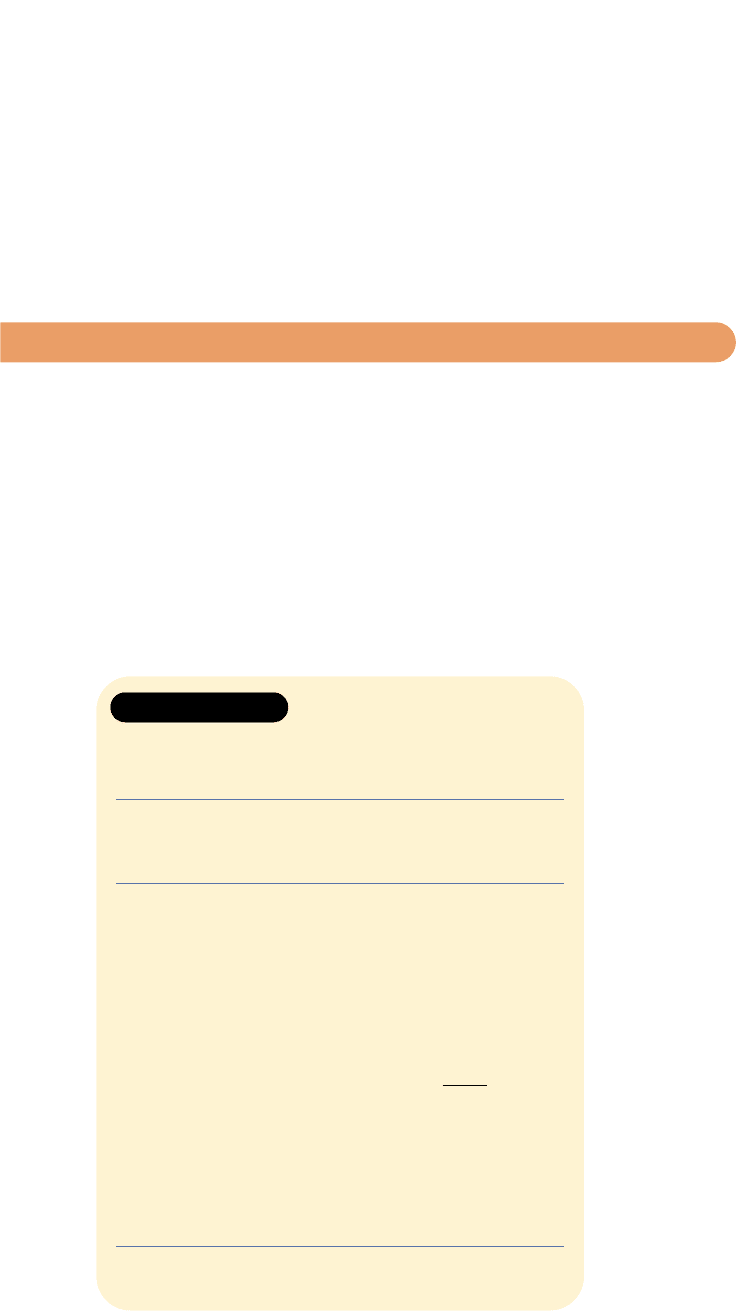
In 1997 about 5.2 million Canadians—or 17.5 percent of the population—lived in
poverty. The richest fifth of the population received 40 percent of total income, while
the poorest fifth received only 5 percent.
What are the sources of income inequality? Is income inequality rising or falling?
Is Canada making progress against poverty? What are the major income mainte-
nance programs in Canada? These are some of the questions that we will answer in
this chapter.
Average family income in Canada is among the highest in the world; in 1997, it was
$57,446 per family. But that average tells us nothing about income inequality. To
learn about that, we must examine how income is distributed around the average.
Distribution of Personal Income by Income Category
One way to measure income inequality is to look at the percentages of families
in a series of income categories. Table 17-1 shows that 11.3 percent of all families
had annual before-tax incomes of less than $20,000 in 1997, while 24.6 percent had
annual incomes of $75,000 or more. The data in the table suggest considerable
inequality of family income in Canada.
Distribution of Personal Income by
Quintiles (Fifths)
A second way to measure income inequality is
to divide the total number of income receivers
into five numerically equal groups, or quintiles,
and examine the percentage of total personal
(before-tax) income received by each quintile.
We do this in Table 17-2.
The Lorenz Curve
We can display quintile distribution of personal
income through a Lorenz curve. In Figure 17-1,
we plot the cumulative percentage of families
on the horizontal axis and the percentage of
income they obtain on the vertical axis. The
diagonal line 0e represents a perfectly equal dis-
tribution of income because each point along that
line indicates that a particular percentage of
families receive the same percentage of income.
In other words, points representing 20 percent
of all families receiving 20 percent of total
income, 40 percent receiving 40 percent, 60 per-
cent receiving 60 percent, and so on, all lie on
the diagonal line.
By plotting the quintile data from Table 17-2,
we obtain the Lorenz curve for 1997. Observe
438 Part Three • Microeconomics of Resource Markets
income
inequality
The unequal distri-
bution of an econ-
omy’s total income
among households
or families.
lorenz
curve
A curve
showing the distri-
bution of income in
an economy.
TABLE 17-1 THE DISTRIBUTION
OF PERSONAL
INCOME BY
FAMILIES, 1997
PANEL (A)
Percentage of all
Personal income category families in this category
under $10,000 2.5
$10,001 to $14,999 3.7
$15,000 to $19,999 5.1
$20,000 to $29,999 13.0
$30,000 to $49,999 25.2
$50,000 to $74,999 25.9
$75,000 and over 24.6
100.0
PANEL (B)
Average 1997 income for families $57,146
Median 1997 income for families $50,361
Number of families in Canada 8,394,000
Source: Statistics Canada, Income Distribution by Size in Canada,
1997 (Ottawa, December 1998), Table 1, Cat. No. 13-207.
Facts about Income Inequality
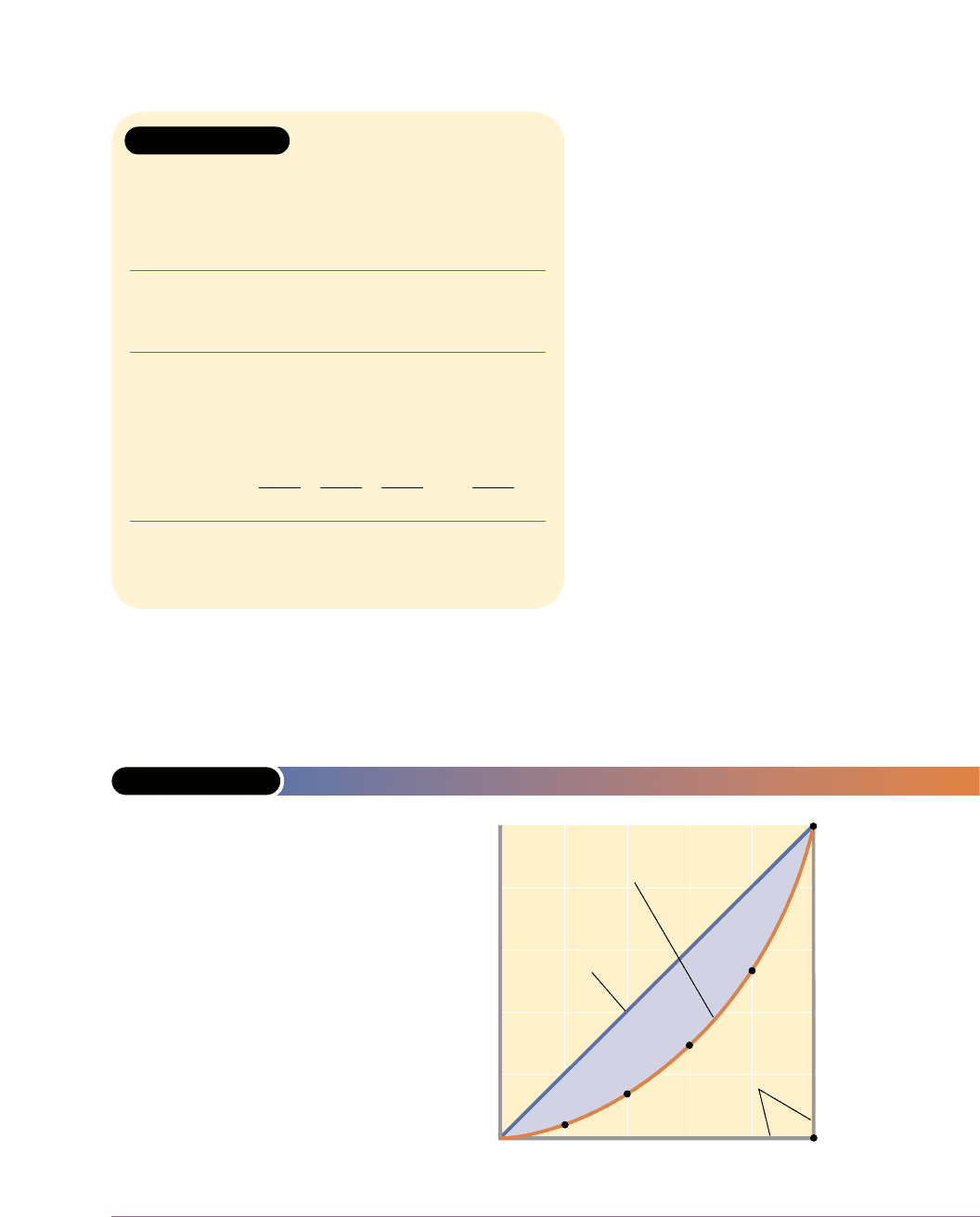
from point a that the bottom 20 percent of all
families received 5.5 percent of the income; the
bottom 40 percent received 16.8 percent (= 5.5 +
11.3), as shown by point b; and so forth. The
blue area between the diagonal line and the
Lorenz curve is determined by the extent that
the Lorenz curve sags away from the diagonal
and indicates the degree of income inequality. If
the actual income distribution were perfectly
equal, the Lorenz curve and the diagonal would
coincide and the blue area would disappear.
At the opposite extreme is a situation of com-
plete inequality, where all families but one have
zero income. In that case the Lorenz curve
would coincide with the horizontal axis from 0
to point f (at 0 percent of income) and then
would move immediately up from f to point e
along the vertical axis (indicating that a single
family has 100 percent of the total income). The
entire area below the diagonal line (area 0ef)
would indicate this extreme degree of inequal-
ity. To generalize, the farther the Lorenz curve
sags away from the diagonal, the greater is the
degree of income inequality.
The Lorenz curve can also be plotted to contrast the income distribution
of different ethnic groups, different age groups, and different countries. (Key
Question 2)
chapter seventeen • income inequality and poverty 439
TABLE 17-2 PERCENTAGE OF
TOTAL BEFORE-TAX
AND AFTER-TAX
INCOME RECEIVED
BY EACH QUINTILE
GROUP
AFTER
BEFORE TAX TAX
Quintile 1951 1965 1997 1997
Lowest 20% 4.4 4.4 4.6 5.5
Second 20% 11.2 11.8 10.0 11.3
Third 20% 18.3 18.2 16.4 17.2
Fourth 20% 23.3 24.5 24.8 24.6
Highest 20% 42.8 41.1 44.2 41.4
100.0 100.0 100.0 100.0
Source: Statistics Canada, Income Distributions: Incomes of Non-
Farm Families and Individuals in Canada, 1951–1965 (Ottawa,
1969); and Income After Taxes, Distribution by Size in Canada, 1996,
1997 (Ottawa, 1997 and 1998), Cat. No. 13-210.
FIGURE 17-1 THE LORENZ CURVE
100
80
60
40
20
0
20 40 60 80 100
Percent of income
Percent of families
f
e
d
c
b
a
Lorenz curve
(actual distribution)
Perfect equality
Complete
inequality
The Lorenz curve is a
graph of the percent-
age of total income
obtained by cumula-
tive percentages of
families. It is a con-
venient means of dis-
playing the degree of
income inequality.
Specifically, the area
between the diagonal
(the line of perfect
equality) and the
Lorenz curve repre-
sents the degree of
inequality in the
Canadian distribution
of total income.

Income Mobility: The Time Dimension
The income data that we have been using so far have a major limitation: The income
accounting period of one year is too short to be very meaningful. Because the Sta-
tistics Canada data portray the distribution of income in only a single year, they may
conceal a more equal distribution over a few years, a decade, or even a lifetime. If
Dushan earns $1000 in year one and $100,000 in year two, while Jamel earns
$100,000 in year one and only $1000 in year two, do we have income inequality? The
answer depends on the period of measurement. Annual data would reveal great
income inequality, but there would be complete equality over the two-year period.
This point is important because evidence suggests considerable variation in the
distribution of income over time. For most income receivers, income starts at a rel-
atively low level, reaches a peak during middle age, and then declines. It follows
that if all people receive exactly the same stream of income over their lifetimes, con-
siderable income inequality would still exist in any specific year because of age
differences. In any single year, the young and the old would receive low incomes,
while the middle-aged receive high incomes.
If we change from a snapshot view of income distribution in a single year to a
time exposure view portraying incomes over much longer periods, we find consid-
erable movement of income receivers among income classes. This movement cor-
rectly suggests that income is more equally distributed over a 5-year, 10-year, or
20-year period than in a single year. Such movement of individuals or families from
one income quintile to another over time is called income mobility.
In short, there is significant individual and family income mobility over time; for
many people, “low income” and “high income” are not permanent conditions. The
longer the period considered, the more equal the distribution of income becomes.
Effect of Government Redistribution
The income data in Tables 17-1 and 17-2 include wages, salaries, dividends, and
interest. They also include all cash transfer payments such as, employment insur-
ance benefits and welfare assistance to needy families. The data are before-tax data
and therefore do not take into account the effects of personal income and Canada
Pension Plan contributions that are levied directly on income receivers. Nor do they
include in-kind or noncash transfers, which provide specific goods or services
rather than cash. Noncash transfers include such things as housing subsidies, den-
tal care, and drug benefit plans. Such transfers are “incomelike,” since they enable
recipients to purchase goods and services.
One economic function of government is to redistribute income, if society so
desires. Table 17-2 reveals that government redistributes income from higher- to
lower-income households through taxes and transfers. This point is made by the fact
that the Canadian distribution of household income before taxes and transfers are
taken into account is less equal than the distribution after taxes and transfers. With-
out government redistribution, the lowest 20 percent of households in 1997 would
have received only 4.6 percent of total income. With redistribution, they received 5.5
percent, 24 percent more.
Which contributes more to redistribution, government taxes or government
transfers? The answer is transfers. Roughly 80 percent of the reduction in income
inequality is attributable to transfer payments, which account for more than 75 per-
cent of the income of the lowest quintile. Together with growth of job opportuni-
ties, transfer payments have been the most important means of alleviating poverty
in Canada.
440 Part Three • Microeconomics of Resource Markets
income
mobility
The
movement of indi-
viduals and families
from one income
quintile to another
over time.
noncash
transfer
Government trans-
fer payments in the
form of goods and
services rather than
money.
<www.jewishworldreview.
com/cols/
williams071699.asp>
The Vanishing Poor
